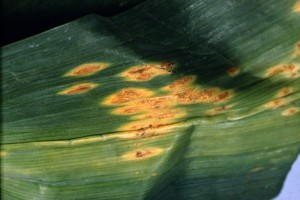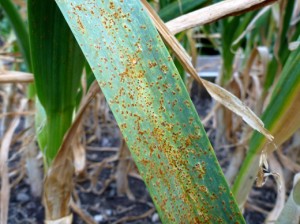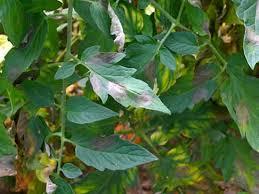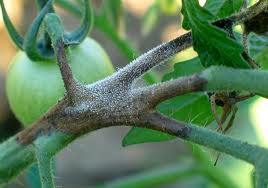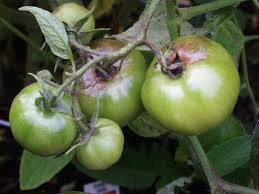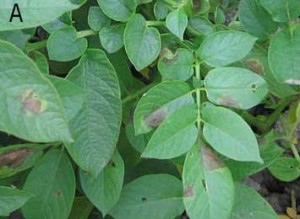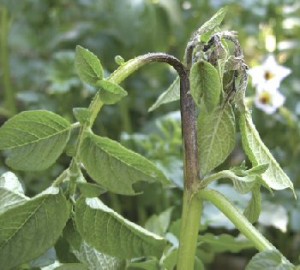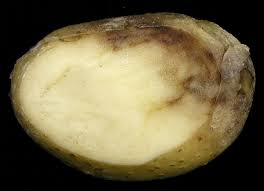Disease Management
Principles of Disease Management:
– Remove diseased leaves, shoots and plants immediately to prevent further spread of the disease. Do not leave infected vegetation on the ground.
– Use our Green Bins on the South West Side of 6th & Maple St. to dispose of green garden waste (Note: paper bags and tied bundles are no longer picked up). When bins are full, seal diseased leaves, shoots and plants tightly in a plastic bag and take to a garbage dumpster or landfill.
– Do not compost diseased leaves, shoots and plants. If disease causing spores, fungus or viruses are present, they will survive in compost.
– Destroy any volunteers of the diseased plants that appear later in the garden. The volunteers will likely be affected by the disease as well.
Rust
Rusts are plant diseases caused by pathogenic fungi. There are more than 7000 species of rust, and many of them are restricted to certain plants. All rusts are parasites and require a living host to complete their life cycle. They generally do not kill the host plant but severely reduce growth and yield. Any appearance of rust must be immediately dealt with by removing, bagging and placing in a garbage dumpster or landfill before the disease can spread any further.
This is what rust looks like:
Leek and garlic plants have been the most affected by rust disease in Maple Gardens, so please help by immediately removing, bagging and placing any affected plants/leaves/roots offsite in a garbage dumpster or landfill before the disease can spread any further – thank you : )
Blight
This is a water mould disease that produces spores, and affects both tomatoes and potatoes. The disease causes leaf and stem lesions as well as fruit rot. In humid weather and in early mornings, a fuzzy mould can often be seen on the underside of the brown/black blotches or on the stem lesions.
To control the spread of blight:
* Remove all of last year’s tomato or potato debris to prevent carryover of disease.
* Water only from underneath the plants, do not get water on the foliage and try to reduce water splash. Don’t over fertilize or over water.
* Remove diseased leaves, shoots and plants immediately. Seal them in a plastic bag and take to a garbage dumpster or landfill.
* If you have had blight previously, replace the upper soil layer before your next planting.
Detailed information is available on the Ministry of Agriculture site: http://www.agf.gov.bc.ca/cropprot/lateblighthg.htm
Tomato Blight:
Potato Blight:

